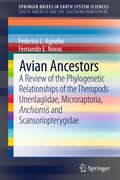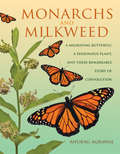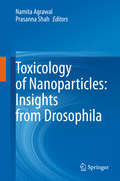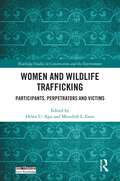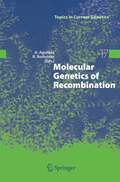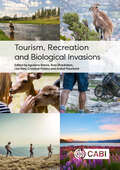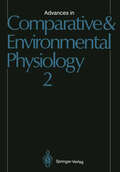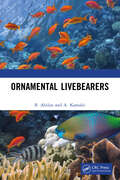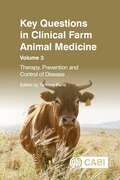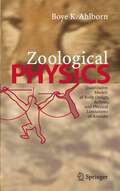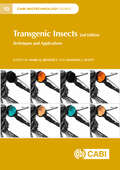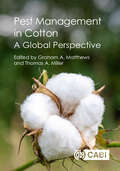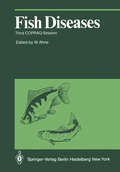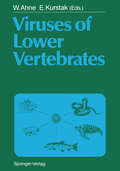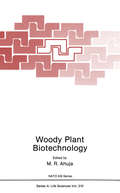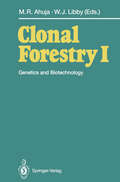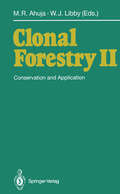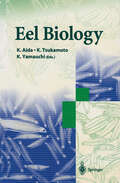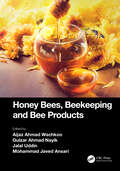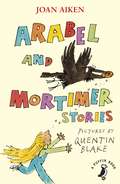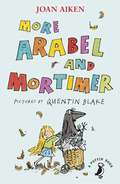- Table View
- List View
Marooned in Manhattan
by Sheila AgnewNew York City. Evie Brooks had seen it on the TV, but suddenly finds herself leaving her home in Dublin and moving to Manhattan to her American uncle Scott, after the death of her mother. Never owned a pet more substantial than a goldfish, Evie is intrigued by Scott's NYC veterinary practice, and before long, Evie is working as an assistant in the clinic. Between the pets, their owners, Scott and his lawyer girlfriend, the Summer quickly becomes a whirlwind of change and activity! And then Evie has to make a huge choice: will she stay in New York, or return to live in Ireland with her godmother, Janet?
Avian Ancestors: A Review of the Phylogenetic Relationships of the Theropods Unenlagiidae, Microraptoria, Anchiornis and Scansoriopterygidae (SpringerBriefs in Earth System Sciences)
by Federico Agnolin Fernando E. NovasAlthough consensus exists among researchers that birds evolved from coelurosaurian theropods, paleontologists still debate the identification of the group of coelurosaurians that most closely approaches the common ancestor of birds. The last 20 years witnessed the discovery of a wide array of avian-like theropods that has considerably amplified the anatomical disparity among deinonychosaurians, some of which resemble Archaeopteryx more than Deinonychus. Among these newly discovered theropods that show remarkable bird-like characteristics are the four-winged theropods Microraptor and Anchiornis, and the unenlagiids Unenlagia, Buitreraptor, and Rahonavis. A bizarre group of minute-sized coelurosaurs, the Scansoriopterygidae, also exhibits some avian similarities that lead some authors to interpret them as more closely related to birds than other dinosaurs. With the aim to explore the phylogenetic relationships of these coelurosaurians and birds, we merged recently published integrative databases, resulting in significant changes in the topological distribution of taxa within Paraves. We present evidence that Dromaeosauridae, Microraptoria, Unenlagiidae, and Anchiornis + Xiaotingia form successive sister taxa of Aves, and that the Scansoriopterygidae are basal coelurosaurians not closely related to birds. The implications in the evolutionary sequence of anatomical characters leading to birds, including the origin of flight, are also considered in light of this new phylogenetic hypothesis.
Monarchs and Milkweed: A Migrating Butterfly, a Poisonous Plant, and Their Remarkable Story of Coevolution
by Anurag AgrawalThe fascinating and complex evolutionary relationship of the monarch butterfly and the milkweed plantMonarch butterflies are one of nature's most recognizable creatures, known for their bright colors and epic annual migration from the United States and Canada to Mexico. Yet there is much more to the monarch than its distinctive presence and mythic journeying. In Monarchs and Milkweed, Anurag Agrawal presents a vivid investigation into how the monarch butterfly has evolved closely alongside the milkweed—a toxic plant named for the sticky white substance emitted when its leaves are damaged—and how this inextricable and intimate relationship has been like an arms race over the millennia, a battle of exploitation and defense between two fascinating species.The monarch life cycle begins each spring when it deposits eggs on milkweed leaves. But this dependency of monarchs on milkweeds as food is not reciprocated, and milkweeds do all they can to poison or thwart the young monarchs. Agrawal delves into major scientific discoveries, including his own pioneering research, and traces how plant poisons have not only shaped monarch-milkweed interactions but have also been culturally important for centuries. Agrawal presents current ideas regarding the recent decline in monarch populations, including habitat destruction, increased winter storms, and lack of milkweed—the last one a theory that the author rejects. He evaluates the current sustainability of monarchs and reveals a novel explanation for their plummeting numbers.Lavishly illustrated with more than eighty color photos and images, Monarchs and Milkweed takes readers on an unforgettable exploration of one of nature's most important and sophisticated evolutionary relationships.
Monarchs and Milkweed: A Migrating Butterfly, a Poisonous Plant, and Their Remarkable Story of Coevolution
by Anurag AgrawalThe fascinating and complex evolutionary relationship of the monarch butterfly and the milkweed plantMonarch butterflies are one of nature's most recognizable creatures, known for their bright colors and epic annual migration from the United States and Canada to Mexico. Yet there is much more to the monarch than its distinctive presence and mythic journeying. In Monarchs and Milkweed, Anurag Agrawal presents a vivid investigation into how the monarch butterfly has evolved closely alongside the milkweed—a toxic plant named for the sticky white substance emitted when its leaves are damaged—and how this inextricable and intimate relationship has been like an arms race over the millennia, a battle of exploitation and defense between two fascinating species.The monarch life cycle begins each spring when it deposits eggs on milkweed leaves. But this dependency of monarchs on milkweeds as food is not reciprocated, and milkweeds do all they can to poison or thwart the young monarchs. Agrawal delves into major scientific discoveries, including his own pioneering research, and traces how plant poisons have not only shaped monarch-milkweed interactions but have also been culturally important for centuries. Agrawal presents current ideas regarding the recent decline in monarch populations, including habitat destruction, increased winter storms, and lack of milkweed—the last one a theory that the author rejects. He evaluates the current sustainability of monarchs and reveals a novel explanation for their plummeting numbers.Lavishly illustrated with more than eighty color photos and images, Monarchs and Milkweed takes readers on an unforgettable exploration of one of nature's most important and sophisticated evolutionary relationships.
Toxicology of Nanoparticles: Insights from Drosophila
by Namita Agrawal Prasanna ShahThis book offers an unparalleled source of information on in vivo assessment of nanoparticle toxicity by using Drosophila as a model organism. Nanoparticles have emerged as an useful tool for wide variety of biomedical, cosmetics, and industrial applications. However, our understanding of nanomaterial-mediated toxicity under in vivo condition remains limited. The book begins with a chapter on synthesis and characterization of nanoparticles used for various biological, medical and commercial purposes. The rest of the chapters deal with the impact of nanoparticles on different biological aspects like behavior, physiology and metabolic homoeostasis using Drosophila as a model organism. Lastly, the book summarizes how proper characterization and evaluation of safe dosage of nanoparticles can be a boon if incorporated in consumer goods and for biomedical applications.Overall, the book pursues an interdisciplinary approach by connecting nanotechnology and biology from various angles using Drosophila as a model system, so as to develop more efficient, safe and effective use of nanoparticles for human beings.
Women and Wildlife Trafficking: Participants, Perpetrators and Victims (Routledge Studies in Conservation and the Environment)
by Helen U. AguThis volume examines women and wildlife trafficking via a bespoke collection of narratives, case studies and theoretical syntheses from diverse voices and disciplines. Wildlife trafficking has been documented in over one hundred and twenty countries around the world. While species extinction and animal abuse are major problems, wildlife trafficking is also associated with corruption, national insecurity, spread of zoonotic disease, undercutting sustainable development investments and erosion of cultural resources among others. The role of women in wildlife trafficking has remained woefully under-addressed, with scientists and policymakers failing to consider the important causes and consequences of the gendered dimensions of wildlife trafficking. Although the roles of women in wildlife trafficking are mostly unknown, they are not unknowable. This volume helps fill this lacuna by examining the roles and experiences of women with case studies drawn from across the world, including Mexico, Cameroon, the Central African Republic, South Africa and Norway. Women can be wildlife trafficking preventors, perpetrators, and pawns; their roles in both facilitating wildlife trafficking are considered from both a supply and a demand viewpoint. The first half of the book assesses the state of science, offering four different perspectives on how women and wildlife trafficking can be studied or evaluated. The second half of the book profiles diverse case studies from around the world, offering context-specific insight about on-the-ground activities associated with women and wildlife trafficking. This book will be of great interest to students and scholars of wildlife crime, conservation, gender studies, green criminology and environmental law. It will also be of interest to NGOs and policymakers working to improve efficacy of efforts targeting wildlife crime, the illegal wildlife trade, and conservation more broadly.
Women and Wildlife Trafficking: Participants, Perpetrators and Victims (Routledge Studies in Conservation and the Environment)
by Helen U. Agu Meredith L. GoreThis volume examines women and wildlife trafficking via a bespoke collection of narratives, case studies and theoretical syntheses from diverse voices and disciplines. Wildlife trafficking has been documented in over one hundred and twenty countries around the world. While species extinction and animal abuse are major problems, wildlife trafficking is also associated with corruption, national insecurity, spread of zoonotic disease, undercutting sustainable development investments and erosion of cultural resources among others. The role of women in wildlife trafficking has remained woefully under-addressed, with scientists and policymakers failing to consider the important causes and consequences of the gendered dimensions of wildlife trafficking. Although the roles of women in wildlife trafficking are mostly unknown, they are not unknowable. This volume helps fill this lacuna by examining the roles and experiences of women with case studies drawn from across the world, including Mexico, Cameroon, the Central African Republic, South Africa and Norway. Women can be wildlife trafficking preventors, perpetrators, and pawns; their roles in both facilitating wildlife trafficking are considered from both a supply and a demand viewpoint. The first half of the book assesses the state of science, offering four different perspectives on how women and wildlife trafficking can be studied or evaluated. The second half of the book profiles diverse case studies from around the world, offering context-specific insight about on-the-ground activities associated with women and wildlife trafficking. This book will be of great interest to students and scholars of wildlife crime, conservation, gender studies, green criminology and environmental law. It will also be of interest to NGOs and policymakers working to improve efficacy of efforts targeting wildlife crime, the illegal wildlife trade, and conservation more broadly.
Molecular Genetics of Recombination (Topics in Current Genetics #17)
by Andrés Aguilera Rodney RothsteinThis work offers a fascinating insight into a crucial genetic process. Recombination is, quite simply, one of the most important topics in contemporary biology. This book is a totally comprehensive treatment of the subject, summarizing all existing views on the topic and at the same time putting them into context. It provides in-depth and up-to-date analysis of the chapter topics, and has been written by international experts in the field.
Tourism, Recreation and Biological Invasions
by Agustina Barros, Ross Shackleton, Lisa J. Rew, Cristóbal Pizarro and Aníbal PauchardThe first section of the book includes information about how tourism-related infrastructure and activities promote biological invasions, including key pathways for non-native invasive species introductions. This section provides case studies of different organisms that are known to be introduced and/or promoted by tourism in different ecosystems or regions. The second section elaborates on known and potential impacts of invasive species on tourism and recreation, including how they may affect, positively or negatively, the economic revenue from tourism, tourist access, recreation, aesthetic values and tourists' perceptions. The last section focuses on management and policy, covering aspects of how visitors perceive invasive species and their willingness to manage them, biosecurity measures to prevent invasion related to tourism, as well as potential policy options moving forward. The book draws on a number of examples across multiple taxa, landscapes and regions of the world.
Advances in Comparative and Environmental Physiology (Advances in Comparative and Environmental Physiology #2)
by G. A. Ahearn J. M. Bouquegneau C. Joiris W. H. Karasov J. Machin M. J. O'Donnell L.C.H. Wang S. H. WrightAdvances in Comparative and Environmental Physiology provides comprehensive, integrated reviews giving sound, critical, and provocative summaries of our present knowledge in environmental and comparative physiology, from the molecular to the organismic level. The field has now gained the international status it deserves and the organization of a series devoted to it is very timely in view of its actual rapid development. Biologists, physiologists, and biochemists, independently of their basic scientific orientation, will find this new series of major interest.
Ornamental Livebearers
by B. Ahilan A. KamaliiThis textbook on Ornamental Livebearers is a comprehensive guide and deals with the culture and breeding of livebearers. The present status of ornamental fish farming and new technologies on the breeding and culture of livebearers have also been aptly dealt with. A wide range of aspects such as, anatomy of livebearers, important livebearers and their breeding, feed and feeding management, water quality management, disease management biosecurity and economics of livebearers fish farm have been described in detail. It is hoped that this publication presented in an easy-to-read style with a number of photographs and illustrations will be of great use to all students who have fisheries in their curriculum and also a standard guide for the researchers, entrepreneurs and ornamental fish farmers.
Ornamental Livebearers
by B. Ahilan A. KamaliiThis textbook on Ornamental Livebearers is a comprehensive guide and deals with the culture and breeding of livebearers. The present status of ornamental fish farming and new technologies on the breeding and culture of livebearers have also been aptly dealt with. A wide range of aspects such as, anatomy of livebearers, important livebearers and their breeding, feed and feeding management, water quality management, disease management biosecurity and economics of livebearers fish farm have been described in detail. It is hoped that this publication presented in an easy-to-read style with a number of photographs and illustrations will be of great use to all students who have fisheries in their curriculum and also a standard guide for the researchers, entrepreneurs and ornamental fish farmers.
Key Questions in Clinical Farm Animal Medicine, Volume 3: Therapy, Prevention and Control of Disease (Key Questions)
by Manoj Kumar Ahirwar D Sai Bhavani P Rama Devi G. S. Harita Babu Lal Jangir K. Sindhu Deepika Lather Alok Mishra Vikas Nehra P. Ramesh Abhishek Pathak G. S. Haritha R. S. Sethi Dr Nasrul Shaikh Brejesh Singh Amita Tiwari Shivangi UdainiyaProviding well over 1,500 questions to test your knowledge of clinical farm animal medicine, the book has been produced in a convenient format so that it can be used at any time in any place. Each chapter starts with a brief introduction to the topic before providing relevant multiple-choice questions. Covering clinical veterinary medicine for common livestock species, this book includes questions about: - diseases of the haemolymphatic and immune system; - metabolic, genetic, neonatal and deficiency diseases; - poisoning. Including a full chapter covering emergency and critical care, this self-test resource for students provides a convenient and useful current source of information to anyone interested in learning, revising and assessing their knowledge.
Zoological Physics: Quantitative Models of Body Design, Actions, and Physical Limitations of Animals
by Boye K. AhlbornThis book presents a physicists view of life. The primary life functions of animals, such as eating, growing, reproducing and getting around all depend on motion: Motion of materials through the body, motion of limbs and motion of the entire body through water, air and on land. These activities are driven by internal information stored in the genes or in the brain and by external information transmitted by the senses. This book models these life functions with the tools of physics. It will appeal to all scientists, from the undergraduate level upwards, who are interested in the role played by physics in the animal kingdom.
Transgenic Insects: Techniques and Applications (CABI Biotechnology Series #3)
by Hassan M. Ahmed Omar S. Akbar Serap Aksoy Yehonatan Alcalay Luke Alphey Yael Arien Rotem Daniel Avraham Camilla Beech Nicholas J. Bongio Vanessa Bottino-Rojas L. Roman Carrasco Lucy Carter Jackson Champer Isabelle Coche Carolina Concha Rocco D’Amato Brinda Dass Jason A. Delborne Ellen M. Dotson Ravi V. Durvasula Matthew P. Edgington Claudia Emerson Guido Favia Adam P. Forshaw Alexander W.E. Franz Marisa L. Guido Monika Gulia-Nuss Daniella An Haber Andrew Hammond Alfred M. Handler Keith R. Hayes Ivy Hurwitz Anthony A. James Thomas P. Kelly Nicole Klein Ana Kormos Lee Benjamin Lamdan David J. Lampe Rosemary S. Lees Maria Vittoria Mancini Aditi Mankad John Mumford Tony Nolan Andrew Nuss David A. O’Brochta Riccardo Papa Philippos Aris Papathanos Michael Pham Ricardo Pereira Megan Quinlan Robyn Raban Jason L. Rasgon Aaron Roberts Yasha Rohwer Nathan Rose Marc F. Schetelig Kristof De Schutter Hideki Sezutsu Arvind Sharma Gregory S. Simmons Guy Smagghe Toshiki Tamura Delphine Thizy Lea Pare Toe Brian L. Weiss Ernst A. Wimmer Liu YangTechnology for modifying the genotypes and phenotypes of insects and other arthropods has steadily progressed with the development of more precise and powerful methods, most prominently transgenic modification. For many insect pests, there is now almost unlimited ability to modify phenotypes to benefit human health and agriculture. Precise DNA modifications and gene drive have the power to make wild-type populations less harmful in ways that could never have been performed with previous transgenic approaches. This transition from primarily laboratory science to greater application for field use has also necessitated greater development of modeling, ethical considerations and regulatory oversight. The 2nd Edition of Transgenic Insects contains chapters contributed by experts in the field that cover technologies and applications that are now possible. This edition includes increased attention to associated challenges of risk assessment, regulation, and public engagement. Featuring: Up-to-date analysis of molecular techniques, such as gene editing. Consideration of public attitudes and regulatory aspects associated with transgenic insects. Many examples of the wide range of applications of transgenic insects. This book will be very valuable to students and researchers in entomology, molecular biology, genetics, public health and agriculture, and will also appeal to practitioners who are implementing the technology, and to regulators, stakeholders and ethicists.
Pest Management in Cotton: A Global Perspective
by Zeeshan AhmedThis book presents a global overview of the background to, and the current state of, crop protection and pest management in cotton crops. Cotton is one of the most economically important crops in the world and has been grown for centuries but maintaining high yields of good quality requires sophisticated approaches to pest management. The introduction and use of pesticides over the decades significantly increased cotton yields but lead to many adverse environmental impacts. Over time, new and alternative insecticides were developed but overuse has enabled pests to develop significant resistance. The development of genetically modified cotton varieties with toxins derived from Bacillus thuringiensis enabled much improved control of lepidopteran larvae, including bollworms, but as the toxins had no effect on sucking pests, farmers had no choice but to continue using insecticides. Also, some of the new cotton varieties developed in recent times have not adapted to different climatic conditions and the quality of cotton fibre declined as a result. This book shows the need for more research to select cotton varieties with high quality fibres suitable for different cotton growing areas and to develop integrated pest management strategies to minimise the use of pesticides. It also demonstrates the need for an inter-disciplinary approach bringing together plant breeders, entomologists, plant pathologists, agronomists and agricultural engineers to achieve high yields of high quality cotton. In the future, farmers will need to adopt new technology to determine when and how pesticides are used in conjunction with cultural and biological control strategies. · Emphasises the importance of research on growing cotton in a world experiencing climate change · Demonstrates how crucial crop protection is in achieving high yields of high quality cotton · Shows how new technology will bring major changes in how cotton is grown in the future
Viruses of Lower Vertebrates
by Winfried Ahne Edouard KurstakAttention to viral infections and pathology previously focussed on diseases of economically important fish. In recent years, however, much new information on molecular virology and oncogenicity derives from viruses occurring in amphibians. New insights into the field of zoonosis were gained by studies of lower vertebrates serving as intermediate hosts in multiple human infections. Certain viruses, e.g. the influenza virus or calicivirus, seem capable of bridging species lines and even the land - sea interface. Global developments in aquaculture are indicated in influenza pandemics. These proceedings present research findings on viruses of fish, amphibians and reptiles, including defence mechanisms, zoonoses, evolutionary considerations and diagnostic approaches.
Woody Plant Biotechnology (Nato Science Series A: #210)
by M. R. AhujaThis volume is based on a workshop on Woody Plant Biotechnology held at the Institute of Forest Genetics, USDA Forest Service, Placerville, California, USA, 15-19 October, 1989. This workshop was organized by the IUFRO (International Union of Forestry Research Organizations) Working Party S2.04-07 - Somatic Cell Genetics -, and supported by the NATO Scientific Affairs Division, Advanced Research Workshop (ARW 692/89) Programme. This was the second workshop of the IUFRO Working Party on Somatic Cell Genetics. The first meeting of this Working Party was held at the Institute of Forest Genetics and Forest Tree Breeding, Federal Research Centre for Forestry and Forest Products, Grosshansdorf, Federal Republic of Germany. The purpose of the present workshop was to bring together scientists from different countries of the world for discussions in the area of woody plant biotechnology. Tissues from woody plants, in particular forest trees, are in general difficult to grow and differentiate in vitro. However, recent advances in tissue culture technology nave paved the way for successful culture of organs, tissues, cells, and protoplasts of woody plants. By employing juvenile tissues, plant regeneration has been accomplished in a number of woody plant species. On the other hand, clonal propagation of mature trees, in particular conifers, is still very difficult by tissue culture.
Clonal Forestry I: Genetics and Biotechnology
by Mulkh-Raj Ahuja William J. LibbyClonal forestry has come of age. Basic techniques in genetics and biotechnology of other organisms are generally applicable to forest trees. However, there are some differences, in particular in the juvenile- and maturation-related regeneration. Examined here are crucial topics of juvenility, maturation and rejuvenation in clonal propagation of trees. In addition, the genetics of clones, population biology of clonal deployment, propagation and field testing of clones, clone identification, clonal physiology, regeneration and variation in plant tissue cultures, the role of somatic embryogenesis in clonal forestry, and recent developments in biotechnology, including the molecular structure of trees and gene transfer are covered in depth.
Clonal Forestry II: Conservation and Application
by Mulkh-Raj Ahuja William J. LibbyProvided here are both underlying theory and recent results concerning the propagation and use of clones in research and in production forestry. State-of-the-art science and case histories treating production, testing, multiplication and deployment of clones are presented. Agroforestry, urban forestry and christmas-tree farming are covered, along with more traditional multiple-use forestry and high-intensity forestry for biomass, wood and fiber production. Clonal forestry is contrasted to the more recent developments of "family forestry", and the classical tree-improvement approach relying on seed-orchards. The history of clonal forestry is covered with reviews of several centuries experience with Sugi in Japan and poplars in Europe. The impacts and use of clones in the contexts of genetic conservation and biodiversity are discussed, as are the laws and regulations affecting clonal production and deployment.
Eel Biology
by K. Aida K. Tsukamoto K. YamauchiAs a food resource in both Eastern and Western countries, the eel is an important fish. Over the years, remarkable progress has been achieved in understanding the mysterious life cycle of eels that has fascinated scientists since the age of Aristotle. The spawning area of the Japanese eel was discovered and the migratory route of its larvae was elucidated. With the development of techniques for artificial induction of gonadal maturation, it became possible to obtain hatched larvae. Larval rearing to the leptocephalus stage, one of the most difficult tasks involved in eel culture, finally was achieved. By presenting these important breakthroughs, Eel Biology will be of great help in the development of effective management strategies for maintaining stable eel populations. With contributions by leading experts, this book is a valuable source for researchers as well as industry technicians in the fields of aquatic biology, aquaculture, and fisheries.
Honey Bees, Beekeeping and Bee Products
by Aijaz Ahmad Wachkoo, Gulzar Ahmad Nayik, Jalal Uddin and Mohammad Javed AnsariHoney bees are social insects; they live together in large, well-organized family groups comprising three castes: queen (fertile female), workers (sterile females) and drones (males). During honey flow season, there is a considerable increase in the foraging activity of the workers and in the rate of egg laying by the queen. Sex determination in honey bees involves a multi-allelic locus, such that homozygotes develop as males and heterozygotes as females, whereas diet quality influences the caste determination in honey bees. Like all living organisms, honey bees can be infested with diseases and pests. Some of these are more deleterious to bee colonies than others, but it is important for the beekeeper to be able to recognize conditions that might be disease or pest-related and respond accordingly so as to improve the quality of honey and honey bee by-products.The best-known primary products of beekeeping are honey and wax, but pollen, propolis, royal jelly, venom, queens, bees and their larvae are also marketable primary bee products. The purpose of this book is to make available information on bee biology and beekeeping as well as to provide comprehensive information on manufacturing, processing and marketing of value-added bee products.This book has been designed as a useful tool for the many diverse professionals who characterize and market honey bee products, including beekeepers, non-beekeepers, small entrepreneurs, extension officers and those involved in small business development. This edited book will be the first of its kind to contain comprehensive information on both bees and bee products.Key Features: Contains comprehensive information on beekeeping. Discusses the recent advances in beekeeping. Sheds light on bee colony integration and organization. Contains brief information on honey bee products.
Arabel and Mortimer Stories (A Puffin Book)
by Joan AikenArabel and her notorious raven Mortimer make a welcome return to Puffin Books!When Arabel's father, Ebenezer Jones, drives his taxi home late one night he comes across 'a large black bird, with a hairy fringe around its beak.' He takes it home and from that moment on, life is never the same again for the Jones family. Arabel's raven is called Mortimer - and he's one in amillion. 'Nevermore!' he cries when astonished or upset, 'Down the hatch' he thinks before gobbling bowler hats, stairs, telephones. He dislikes flying except in emergencies, and with disaster-prone Mortimer around there are plenty of those. There are six hilarious escapades in this collection, brought to life by Quentin Blake's wonderfully animated illustrations.
More Arabel and Mortimer (A Puffin Book)
by Joan AikenArabel and her notorious pet raven Mortimer make a welcome return to the Puffin nest.When Arabel's father, Ebenezer Jones, drives his taxi home late one night he comes across 'a large black bird, with a hairy fringe around its beak.' He takes it home and, from that moment on, life is never the same again for the Jones family. Arabel's raven is called Mortimer - and he's one in a million. 'Nevermore!' he cries when astonished or upset, 'Down the hatch' he thinks before gobbling bowler hats, stairs, telephones. He dislikes flying except in emergencies, and with disaster-prone Mortimer around there are plenty of those. There are seven hilarious escapades in this collection, brought to life by Quentin Blake's wonderfully animated illustrations: THE MYSTERY OF MR JONES'S DISAPPEARING TAXI; MORTIMER'S PORTRAIT ON GLASS; MORTIMER'S CROSS; MORTIMER SAYS NOTHING; A CALL FROM THE JONESES; MR JONES'S REST CURE and ARABEL'S BIRTHDAY.

